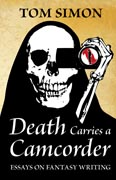Begob and begorrah, ’tis St. Paddy’s Day, that special time o’ the year when authentic Irish bars are filled with authentic Irishmen drinking authentic Irish green beer… men with authentic Irish names like O’Schmidt, O’Mukherjee, and O’Chang.
In the spirit of which, we bring you this fine performance of ‘Danny Boy’, by three of the finest authentic Irish singers of our time.
Sláinte mhuppet!







Recent Comments